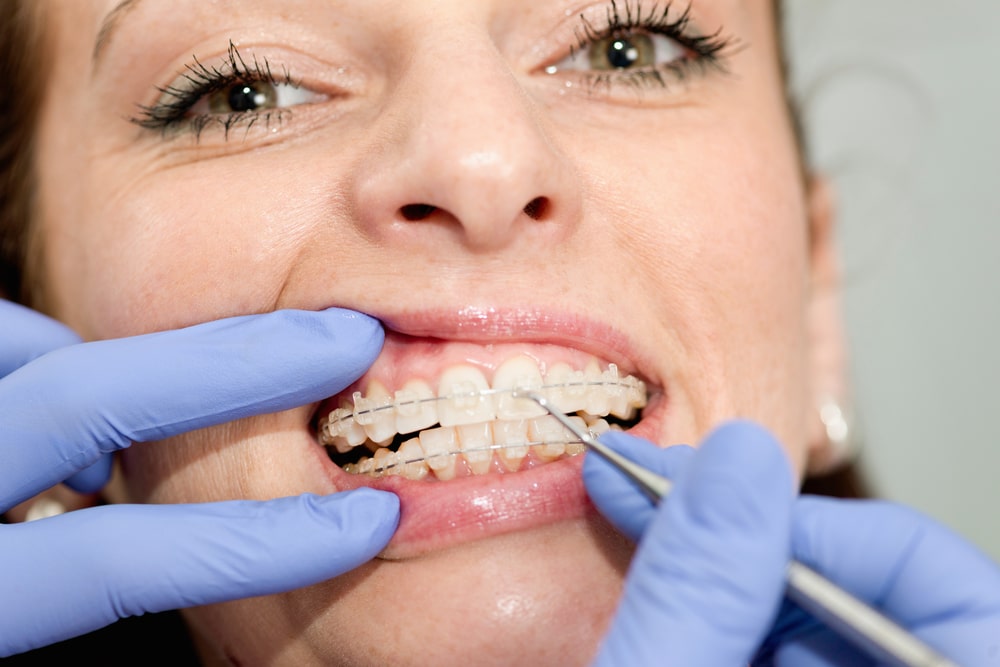A Biased View of Legacy Orthodontics
A Biased View of Legacy Orthodontics
Blog Article
The Greatest Guide To Legacy Orthodontics
Table of ContentsThe 2-Minute Rule for Legacy OrthodonticsThe smart Trick of Legacy Orthodontics That Nobody is Talking AboutLegacy Orthodontics - QuestionsThings about Legacy OrthodonticsThe 6-Minute Rule for Legacy Orthodontics
In enhancement, we supply flexible treatment schedules, adaptable settlement options and an enjoyable, enjoyable experience.An orthodontist is a dental professional trained to detect, avoid, and treat teeth and jaw abnormalities. They correct existing problems and are educated to identify troubles that might create in the future. Orthodontists deal with people of every ages, from kids to grownups. Individuals often link a perfect smile with great wellness.
Malocclusion, or misaligned teeth, can bring about dental concerns, including dental cavity, periodontal condition, and difficult or unpleasant chewing. But not everyone is birthed with straight teeth. If you have a poor bite or huge rooms between your teeth, you may desire to speak with a dental expert concentrating on orthodontic treatment.
The Best Guide To Legacy Orthodontics
( Image Credit Report: DigitalVision/Getty Images) Orthodontists make use of taken care of and removable dental tools, like braces, retainers, and bands, to change the position of teeth in your mouth. Orthodontic treatment is for dental irregularities, consisting of: Jagged teethBite issues, like an overbite or an underbiteCrowded teeth or teeth that are as well far apartJaw misalignmentThe goal of orthodontic treatment is to boost your bite.
A healthy bite guarantees you can consume, chew, and speak properly. While you may think about orthodontists as primarily for youngsters or teenagers that need braces, they can deal with dental problems at any type of age. Orthodontists go to university, dental school, and orthodontic institution. After graduation, they spend 2 or 3 years in an orthodontic residency program.
All orthodontists are dental practitioners, yet not all dental professionals are orthodontists. Orthodontic residency programs supply intensive, focused instruction for dental specialists. They concentrate on two areas: Just how to properly and safely relocate teeth Just how to appropriately lead growth in the teeth, jaw, and faceOnce an orthodontist has actually completed training, they have the option to become board certified.
An Unbiased View of Legacy Orthodontics
Misalignment, or malocclusion, is the most typical reason people see an orthodontist. It is genetic and is the outcome of dimension differences in between the top and lower jaw or in between the jaw and teeth. Malocclusion results in tooth congestion, an irregular jaw, or uneven bite patterns. Malocclusion is typically treated with: Your orthodontist attaches metal, ceramic, or plastic square bonds to your teeth.
Some people require a headgear to assist relocate teeth right into line with stress from outside the mouth. A retainer is a custom-made tool that maintains your teeth in place.
They're most typically made use of on children. They can develop added space in the mouth without having to draw teeth. If you have a serious underbite or overbite, you may require orthognathic surgical procedure (also called orthodontic surgical treatment) to extend or reduce your jaw. Orthodontists use cables, medical screws, you could try this out or plates to sustain your jaw bone.
You might require to see an orthodontist if you have: Crowding or not adequate area for every one of your teethOverbite, when your upper teeth come by your bottom teethUnderbite, when your bottom teeth are also much forwardSpacing or problems with gapsCrossbite, which is when your upper teeth fit behind your base teeth when your mouth is closedOpen bite or an upright gap between your front bottom and upper teethMisplaced midline, when the facility of your bottom and upper teeth don't align Correcting an oral malocclusion can: Make biting, eating, and speaking easierImprove the balance of our face and your overall appearanceEase pain from temporomandibular joint problemsSeparate your teeth and make them much easier to clean up, assisting prevent tooth decay or tooth cavities It's typically a dentist who first notifications misaligned teeth throughout a regular test.
Some Known Details About Legacy Orthodontics

Throughout your first orthodontic assessment, you'll likely have: An oral examPhotos taken of your face and smileDental X-raysPanoramic (360 level) X-rays of your face and headImpressions to produce molds of your teethThese tests will certainly aid your orthodontist understand exactly how to proceed with your therapy. orthodontist. An orthodontist is a dental professional who's had training to treat your teeth and jaw
An orthodontist is concentrated on your bite, so something like a broken tooth would be handled by a dentist. Orthodontists are concentrated on your bite, or the way your teeth fit together, and the straightness of your teeth.
Ever before questioned just how celebrities constantly seem to have flawlessly aligned teeth? Orthodontists are oral professionals who focus on dealing with abnormalities in the teeth and jaws.
Examine This Report on Legacy Orthodontics

, orthodontists have a varied toolkit at their disposal. These reliable braces utilize a system of braces bonded to the teeth and linked by cables.
Clear aligners, like Invisalign, are a popular alternative for patients seeking a much more very discreet treatment alternative. These detachable trays are custom-made to gradually move the teeth's setting. Headgear may be utilized together with braces or aligners to use additional targeted forces, specifically for dealing with jaw disparities. In cases of narrow jaws, palatal expanders can be utilized to develop room for correct tooth placement.
Report this page